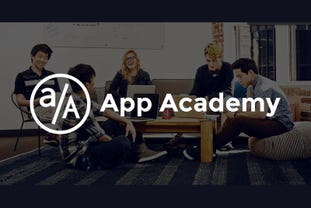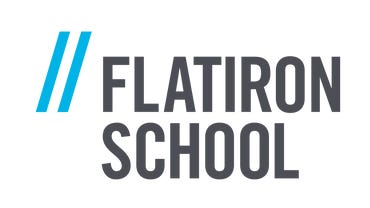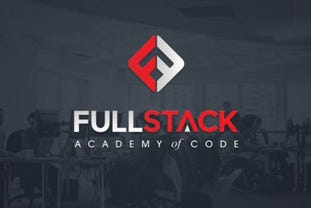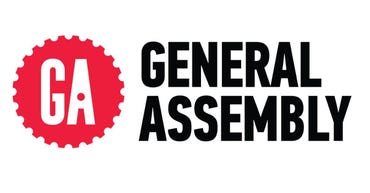Doug Wintemute
| October 5, 2021
| Topic: Education
Full-stack web development bootcamps prepare students for software engineering and development roles, along with various other computer science careers. Students often choose these programs for their condensed and focused nature, while employers value their emphasis on practical and relevant training. Bootcamps equip learners with applicable skills for many industries, including computer systems design, healthcare, and business and finance.
The Bureau of Labor Statistics projects a 13% growth in employment for web developers between 2020 and 2030, 5% more than the average rate for all occupations. The fast growth results from an increasing demand for ecommerce, mobile device solutions, and enhanced communications with users. Full-stack developers also enjoy strong financial rewards, earning median annual wages of $77,200.
Search for online colleges by subject
What is a full-stack web development bootcamp?
A full-stack web development bootcamp provides training in both front- and back-end development. It also covers the most useful programming languages, web applications, and database architectures.
Full-stack web development bootcamps vary in curriculum, length, and delivery format. They often teach learners design strategies, the common tools and environments, and web and application development strategies. Depending on the program, participants may complete bootcamps anywhere from 3-12 months.
The available formats can differ considerably between programs, with some offering online, in-person, and hybrid study options, along with self-paced, part-time, and full-time schedules. They may run through colleges and universities or through independent organizations, which might also impact bootcamp accreditation. With so many options available, prospective students can usually find a bootcamp that suits their needs.
Skills learned in a full-stack web development bootcamp
Participants can pick up plenty of skills in a full-stack web development bootcamp. They may develop skills in areas such as architecture, design, databases, and application development.
Coding bootcamps often cover multiple programming languages, including HTML, JavaScript, Python, and CSS. Students learn when and how best to use these different scripting languages. In addition to learning how to code, bootcamp participants can pick up the following skills:
Project planningStatic and multi-page website developmentAPI and application developmentDatabase architectureTestingMobile developmentStorage creation and handling
What should I expect from the day-to-day in a coding bootcamp?
Full-stack coding bootcamps may require students to attend online or in-person classes during the day, weeknights, or weekends. Learners often spend between 20-30 hours studying each week, in addition to instructor-led discussions, group projects, and independent study. Coding bootcamps also feature networking and mentorship opportunities.
Prospective students often ask, how hard is coding? The answer depends on the language and the function, but bootcamps usually aim to provide the fundamentals in an approachable way. While some of the more rigorous bootcamps require passing grades, most provide the necessary assistance to help students get through successfully.
Why pursue a bootcamp vs. a degree?
In many ways, full-stack web development bootcamps provide an accessible alternative to different computer science degrees. They can qualify graduates for some of the same entry-level careers but in a shorter period of time and for less money. The following list highlights some of the things that make coding bootcamps worth it.
More affordableQuicker training timesEasier admissionFocused and practical trainingNetworking potentialMentoring opportunities
How much do full-stack web development bootcamps cost?
The cost of a full-stack web development bootcamp depends on the program and organization offering it. These programs can fall anywhere between $2,000-$31,000, though most come in at around $10,000.
Coding bootcamps usually cost less than a college degree because they feature fewer credits and do not provide general education training. Some programs offer free training, but most charge competitive rates for professionals looking for access to a rewarding field. The types of support offered, technologies used, and faculty quality can all impact program costs.
Though bootcamp students cannot always access the same type of federal funding as college and university degree-seekers, they can qualify for scholarships and financial aid. Many organizations also offer low-interest payment plans and creative financing options, such as payment deferrals and income-sharing agreements.
Top full-stack web development bootcamps
To help prospective students narrow down their list of potential full-stack web development bootcamps, we have listed some of the top programs available in the U.S. Though not an exhaustive list, the following entries should give aspiring web developers a good start to their search.
4Geeks Academy

In-person location: Miami and OrlandoAvailable online? YesFormat: Online and in-person, part-timeLength: 16 weeksSubjects: Web development, API development, and advanced applicationsCost: $7,499Financing options: Upfront payment, extended payment, and income-sharing agreementJob placement assistance: Yes
4Geeks Academy’s full-stack web developer bootcamp has prepared aspiring developers for the field since 2014. The training covers coding foundations and popular Python and JavScript languages, along with web, API, and application development. Bootcamp participants have access to support throughout the program and after graduation.
4Geeks Academy’s programs start multiple times each year and feature three weekly online or in-person classes. Much of the learning takes place through project-based practical training. For admission, applicants need only logical thinking and do not need coding experience.
View now at 4Geeks Academy
App Academy

In-person location: San Francisco and New YorkAvailable online? YesFormat: Online and in-person, part-time and full-timeLength: 16-48 weeksSubjects: Python, JavaScript, React, MySQL, and responsive designCost: $17,000-$31,000Financing options: Upfront payment, payment plans, financing, and deferred tuition modelJob placement assistance: Yes
Running since 2012, App Academy’s full-stack web development bootcamp trains aspiring software developers and engineers. The program starts with programming, computer science, and development fundamentals, moving into front- and back-end engineering and Python. The training combines lectures, projects, partner programming assignments, and self-study.
App Academy’s classes run Monday through Friday for full-time students, whereas part-time learners spend up to 27.5 hours each week with homework, evening weekday classes, and Saturday lessons. For admission, prospective online students need to complete non-technical assessments and an interview, plus technical challenges prior to beginning courses. Prospective in-person students need to pass a coding challenge.
View now at App Academy
CareerFoundry

Image: Getty
Format: Online, full-time and part-timeLength: 4-7 monthsSubjects: HTML and CSS, server- and client-side programming, and native app developmentCost: $9,800Financing options: Upfront payment, month-to-month, and custom payment plansJob placement assistance: Yes
CareerFoundry started offering its full-stack web development bootcamp in 2014, striving to train the next generation of development leaders. The training comprises front-end fundamentals and full-stack immersion, including programming, app development, testing, and collaboration.
Learners study online 15-40 hours each week and, depending on their scheduling choice, can graduate in less than seven months. CareerFoundry offers multiple start dates each year, provides tutoring and mentorships, and allows students to develop a portfolio as they study. For admission, prospective students only need a computer and an interest in web development.
View now at CareerFoundry
Flatiron School

Flatiron School
In-person location: Chicago, Denver, New York, Austin, and moreAvailable online? YesFormat: Online and on-campus, full-time and part-timeLength: 15-60 weeksSubjects: JavaScript, React.js, Ruby basics, and SQLCost: $16,900Financing options: Upfront payment, payment plan, and loan financingJob placement assistance: Yes
Flatiron School was founded in 2012, and the full-stack web development bootcamp provides a streamlined pathway to the software engineering profession. The training covers front- and back-end development, front-end web applications, and back-end web APIs. Depending on their chosen delivery method, students may learn through class instruction, independent study, or 1-on-1 instruction.
Flatiron School offers monthly start dates and various mentorship opportunities. Full-time students spend nine hours in class daily, Monday to Friday, while part-time learners can customize their schedule. For admission, prospective students need to complete an interview and a problem-solving assessment.
View now at Flatiron School
Fullstack Academy

In-person location: New YorkAvailable online? YesFormat: Online and on-campus, full-time and part-timeLength: 17-28 weeks Subjects: HTML, CSS, advanced JavaScript, and web development environmentCost: $15,980-$17,910Financing options: Upfront payment, loan financing, and scholarship optionsJob placement assistance: Yes
Founded in 2012, Fullstack Academy’s full-stack web development bootcamp opens the door to software engineering careers. The curriculum covers HTML and JavaScript foundations, front- and back-end development, and databases. Students complete guided team projects, personal projects, and a capstone project.
Depending on the schedule chosen, Fullstack Academy’s bootcamp classes run for 4-15 weeks, with daily Monday-Friday classes or evenings and weekends. For admission, prospective students need to complete an interview and an assessment. Some coding experience is expected, but aspiring applicants can complete pre-bootcamp courses to prepare.
View now at Fullstack Academy
General Assembly

General Assembly
In-person location: Multiple locations in North AmericaAvailable online? YesFormat: Online and in-person, full-time and part-timeLength: Less than 24 weeksSubjects: Web applications, object-oriented programming, Python, and DjangoCost: $14,950Financing options: Upfront payment, loan financing, installment plans, and income-sharing agreementsJob placement assistance: Yes
General Assembly’s full-stack web development bootcamp has helped train aspiring software engineers since 2011. In addition to front- and back-end development, students learn front-end framework and APIs. The training combines expert instruction, solo and group projects, portfolio building, and career coaching.
General Assembly offers multiple start dates throughout the year, and classes run daily throughout the week or during evenings and weekends. For admission, prospective students need only an interest in coding, with no relevant experience required.
View now at General Assembly
Ironhack

Getty Images/iStockphoto
In-person location: MiamiAvailable online? YesFormat: Online and in-person, full-time and part-timeLength: 9-24 weeks Subjects: JavaScript, HTML, CSS, React, and Git and GitHubCost: $12,000-$13,000Financing options: Upfront payment, loan financing, and payment plansJob placement assistance: Yes
Ironhack’s full-stack web development bootcamp was founded in Madrid, Spain in 2013. The program now runs in Miami and covers courses in coding basics, Express and React frameworks, databases, and Agile methodologies. The training features instructor-led sessions, independent work, practical assignments, and open office discussions.
Ironhack’s bootcamp starts every 3-6 months. Students take classes daily throughout the week or during weeknights and weekends, plus 15 hours each week on individual study. For admission, prospective students need to complete personal and technical interviews. While they do not need relevant experience, coding knowledge can help.
View now at Ironhack
Nucamp

Getty Images/iStockphoto
In-person location: Various locations across the countryAvailable online? YesFormat: Online, in-person, and hybrid part-timeLength: Less than 22 weeksSubjects: SQL, mobile development, DevOps with PythonCost: $1,880-$2,588Financing options: Various payment plans and financing optionsJob placement assistance: Yes
Nucamp was founded in 2016 and offers a full-stack web development bootcamp that features instruction, workshops, and projects. The curriculum includes training in web application architecture, databases and storage, and web and mobile development technologies. In-person learners typically spend four hours in class each week, whereas online learners spend between 6-14 hours per week.
Nucamp’s courses typically run for 4-5 weeks and conclude with a portfolio project. Prospective students need only a computer for admission. While participants should have an understanding of HTML, JavaScript, and CSS, prep courses are available to get learners up to speed.
View now at Nucamp
Springboard

Springboard
Format: Online Length: 6-9 monthsSubjects: Python, Flask, SQL, Node, and ExpressCost: $9,900-$16,500Financing options: Upfront payment, payment plan, and income-sharing agreementJob placement assistance: Yes
Springboard’s full-stack web development bootcamp prepares students for software engineering careers. The program features 800 hours in total, with courses covering front-end technologies, application-building with Python, front-end deployment with JavaScript, and data structures. The bootcamp offers instruction, mentorships, and portfolio projects.
Springboard bootcamps start multiple times each year, and students typically study 20-25 hours per week. For admission, applicants need to complete an interview and a skills survey. They should possess prerequisite knowledge in JavaScript fundamentals, problem-solving skills, and HTML and CSS fundamentals.
View now at Springboard
Thinkful

In-person location: Los AngelesAvailable online? YesFormat: Online and in-person, full-time and part-timeLength: 5-6 monthsSubjects: Interactive web applications, NodeJS, ReactCost: $9,500-$16,000Financing options: Upfront payment, payment plans, and deferred tuition plansJob placement assistance: Yes
Thinkful’s full-stack web development bootcamp equips learners with the skills to pursue software engineering careers. The training includes courses in client-side web and application development, back-end architecture, data structures, and server-side programming. Students receive mentorships and in-class instruction and participate in workshops and group projects.
Full-time students study 50-60 hours each week, whereas part-time students study 20-30 hours. Prospective part-time students do not need any experience for admission, though full-time students need to complete a four-week prep course prior to beginning the program.
View now at Thinkful
Are coding bootcamps accredited?
No. Unless they are connected to an accredited college or university, coding bootcamps are not accredited. Prospective students may, however, verify program outcomes and results through the Council on Integrity in Results Reporting.
Are coding bootcamps for beginners?
Yes. Many coding bootcamps welcome beginners. These often start with the fundamentals and the easier programming languages to get participants comfortable before tackling more advanced material.
What kind of jobs can I get if I learn full-stack web development?
Most graduates of full-stack web development bootcamps pursue web developer and engineering positions. Other potential pathways may include computer support specialists, computer and network administrators, and computer programmers.
Related Topics:
Developer
Doug Wintemute
| October 5, 2021
| Topic: Education